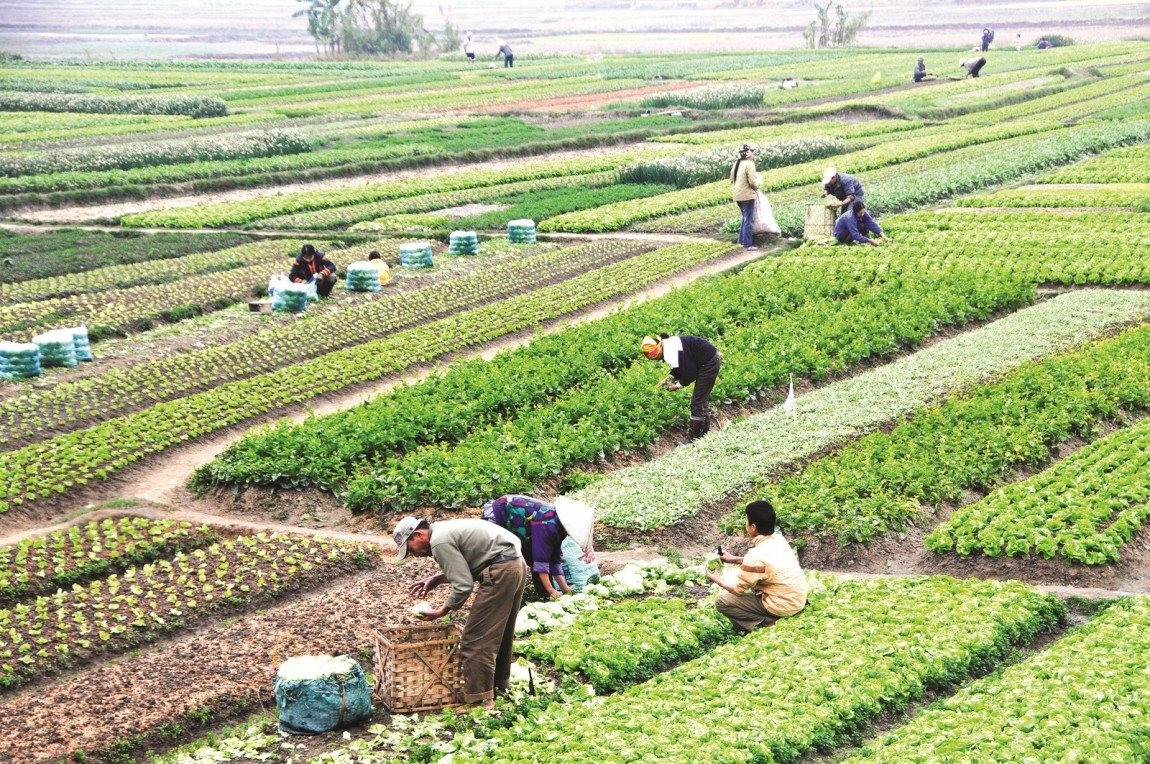Limits on recognition of lan use right of Use self-reclaimed agricultural land in Hanoi, Vietnam
Households, individuals in Hanoi City using agricultural land through self-reclamation are recognized for land use rights according to the limits below.

Limits on recognition of lan use right of Use self-reclaimed agricultural land in Hanoi, Vietnam (Internet image)
Limits on recognition of lan use right of Use self-reclaimed agricultural land in Hanoi, Vietnam
According to Clause 4, Article 139 of the Land Law, households and individuals currently using agricultural land due to self-reclamation, with no disputes, are granted a Certificate of Land Use Rights and ownership of assets attached to the land by the State within the agricultural land allocation limits specified by the provincial People's Committee; if they exceed the limits set by the provincial People's Committee, the excess area must be converted to State land lease.
On September 27, 2024, the Hanoi People's Committee issued Decision 61/2024/QD-UBND promulgating Regulations on several matters in the land sector in Hanoi.
According to Article 10 of the Regulations annexed to Decision 61/2024/QD-UBND of the Hanoi People's Committee, effective from October 07, 2024, households and individuals currently using self-reclaimed agricultural land, which is in compliance with the agricultural land use plan approved by competent State agencies and is dispute-free, shall be recognized by the State for land use rights within the following limits:
(1) Households and individuals using land for planting annual crops or aquaculture are recognized by the State to have land use rights within a limit of no more than 02 hectares.
(2) Households and individuals using land for growing perennial crops or production forests are recognized by the State to have land use rights within a limit of no more than 05 hectares.
(3) In cases where households and individuals use land exceeding the limits in sections (1) and (2), they must convert the excess area to State land lease.
Specific Regulations on Types of Land in the Agricultural Land Group in Vietnam
According to Article 4 of Decree 102/2024/ND-CP, the types of land in the agricultural land group in Vietnam are specified as follows:
(1) Land for planting annual crops is land used for planting crops that are sown, harvested, and the production cycle ends within a period of no more than one year, including annual plants kept for multiple cycles. Annual crop land includes rice cultivation land and land for other annual crops, specifically:
- Rice cultivation land is land used for cultivating one crop cycle or more or for rice cultivation in combination with other lawful land use purposes, primarily for rice cultivation. Rice cultivation land includes specialized rice cultivation land and remaining rice cultivation land, where specialized rice cultivation land is used for cultivating 02 or more rice crops a year;
- Land for other annual crops is land used for planting annual crops other than rice.
(2) Land for growing perennial crops is used for planting crops that are sown once, grow over many years, and yield harvests one or multiple times.
(3) Forestry land is land used for managing, protecting, and developing special-use forests, protection forests, and production forests as per forestry laws, specifically classified as follows:
- Special-use forest land is land where special-use forests exist according to forestry laws, or land allocated for developing special-use forests;
- Protection forest land is land where protection forests exist according to forestry laws, or land allocated for developing protection forests;
- Production forest land is land where production forests exist according to forestry laws, or land allocated, leased or converted for developing production forests.
(4) Land for aquaculture is specifically utilized for aquaculture purposes.
(5) Land for centralized livestock raising is land for building centralized livestock farms in separate areas as per livestock regulations.
(6) Land for salt production is used for producing salt from seawater.
(7) Other agricultural land includes:
- Land for cultivating plant and animal breeds and for planting flowers, ornamental plants; land for cultivation, livestock raising, aquaculture for educational, research, experimental purposes;
- Land for constructing greenhouses and other structures for cultivation, livestock raising, including non-soil based forms of cultivation, livestock raising;
- Land for constructing facilities associated with agricultural production areas, including land for building resting places, shelters, and camps for laborers, and land for storing agricultural products, plant protection chemicals, fertilizers, machinery, tools, and other auxiliary works.
- Number of deputy directors of departments in Vietnam in accordance with Decree 45/2025/ND-CP
- Cases ineligible for pardon in Vietnam in 2025
- Decree 50/2025 amending Decree 151/2017 on the management of public assets in Vietnam
- Circular 07/2025 amending Circular 02/2022 on the Law on Environmental Protection in Vietnam
- Adjustment to the organizational structure of the Ministry of Health of Vietnam: Certain agencies are no longer listed in the organizational structure
- Vietnam aims to welcome 22-23 million international tourists in Vietnam in 2025
-

- Number of deputy directors of departments in Vietnam ...
- 15:04, 05/03/2025
-

- Cases ineligible for pardon in Vietnam in 2025
- 14:43, 05/03/2025
-

- Decree 50/2025 amending Decree 151/2017 on the ...
- 12:00, 05/03/2025
-

- Circular 07/2025 amending Circular 02/2022 on ...
- 11:30, 05/03/2025
-

- Adjustment to the organizational structure of ...
- 10:34, 05/03/2025
-

- Notable new policies of Vietnam effective as of ...
- 16:26, 11/04/2025
-
.Medium.png)
- Notable documents of Vietnam in the previous week ...
- 16:21, 11/04/2025
-
.Medium.png)
- Notable documents of Vietnam in the previous week ...
- 16:11, 02/04/2025
-
.Medium.png)
- Notable new policies of Vietnam to be effective ...
- 16:04, 02/04/2025
-
.Medium.png)
- Notable new policies of Vietnam effective from ...
- 14:51, 21/03/2025

 Article table of contents
Article table of contents
